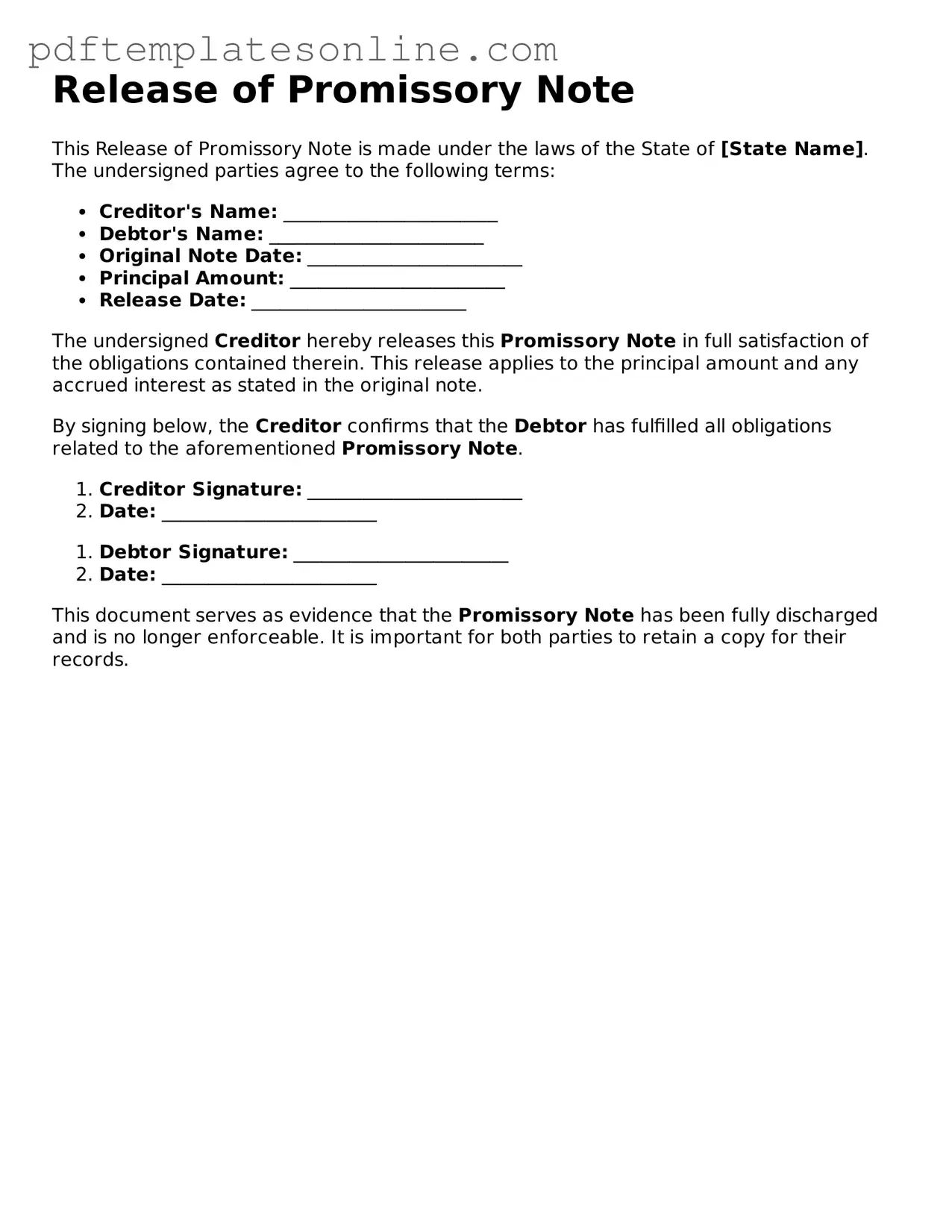When filling out a Release of Promissory Note form, individuals often overlook critical details that can lead to complications down the line. One common mistake is failing to include all necessary parties involved in the agreement. If a borrower or co-signer is omitted, it can create confusion about who is responsible for the note and may lead to disputes later.
Another frequent error is neglecting to specify the date of release clearly. The date is essential because it marks when the obligations under the promissory note are officially terminated. Without this detail, there may be ambiguity regarding the effective date of the release, potentially affecting the rights of the parties involved.
Inaccurate or incomplete information about the promissory note itself is also a common pitfall. The form should reference the original note's amount, date, and any relevant terms. Omitting or misrepresenting these details can result in misunderstandings or legal challenges regarding the validity of the release.
Many people also fail to provide their signatures or the signatures of all relevant parties. A release form without the necessary signatures may not be considered valid, leaving the obligations of the promissory note intact. It is crucial to ensure that everyone involved reviews and signs the document to avoid any potential issues.
Lastly, individuals often underestimate the importance of keeping a copy of the completed form. After submitting the release, it is essential to retain a copy for personal records. Without documentation, proving that the note has been released could become challenging if disputes arise in the future.
